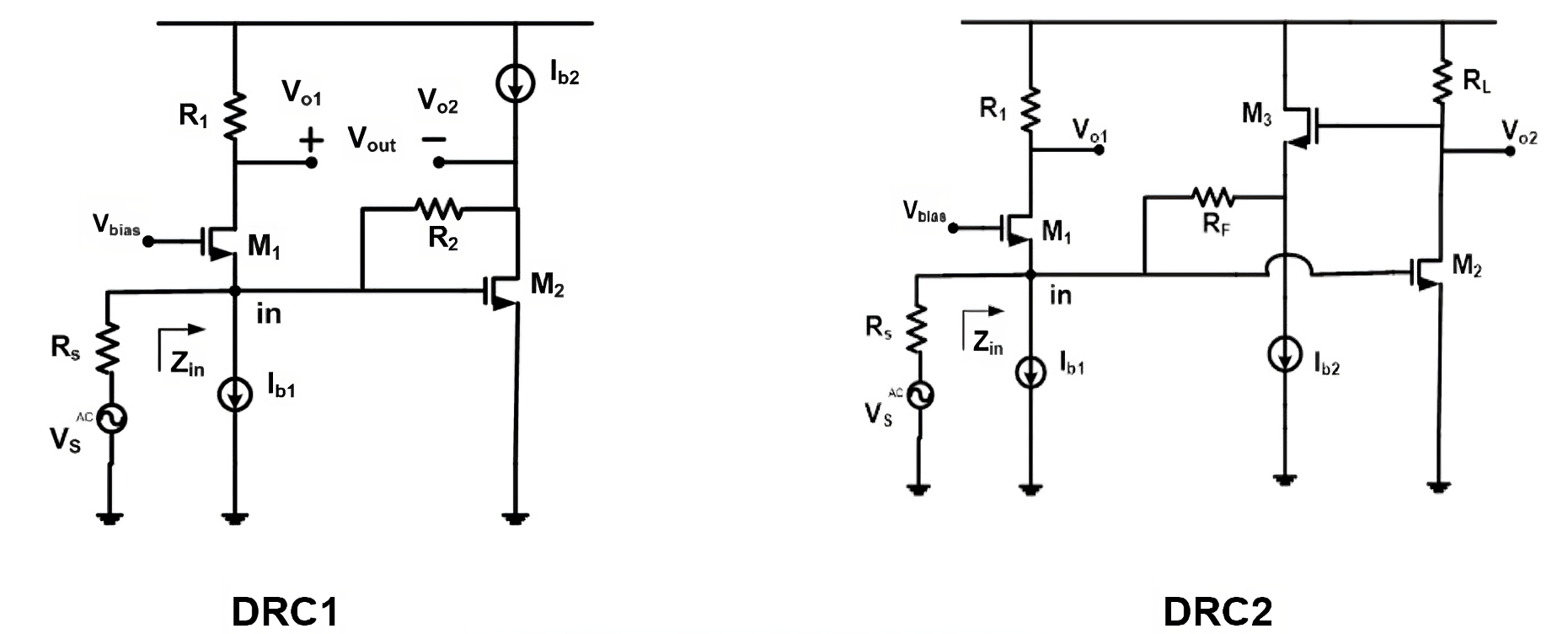This invention addresses noise cancellation in Low Noise Amplifier (LNA) circuits, commonly used in communication systems. It introduces a feedback component in the circuit to cancel out noise produced by transistors. By configuring transistors in parallel stages and introducing feedback, the system effectively cancels both the first and second noise components, resulting in cleaner, clearer signal output. This technology enhances the performance of LNAs, ensuring better signal quality in communication devices like cell phones and Wi-Fi routers.
Current LNAs often suffer from noise introduced by transistors, compromising signal quality. There is a need for more effective mechanism to cancel out this noise and enhance the performance of LNAs, ensuring clearer and more reliable communication in devices.
- Noise Cancellation System: This innovation has an integrated mechanism to cancel noise in LNA circuits reducing the need for separate circuits.
- Design Flexibility: Designers can now balance trade-offs such as gain, noise figure, power consumption, and bandwidth more effectively in LNA design procedures.
- Improved Receiver Performance: The resistive feedback introduced in the LNA circuit cancels noise produced by transistors, leading to cleaner signal output.
- Wideband Compatibility: The system supports wideband single-ended input and differential output LNAs, the configuration widely used in any receiver chain as the antenna which normally feeds the LNA is of single ended output and the blocks after LNA prefers differential input, enhancing compatibility across different communication standards and frequency bands.
- Simplified Front-End Design: Designing multi-standard receivers is made easier as the system offers a unified solution for noise cancellation in LNAs, streamlining the front-end design process.
- Noise Tackling at the Source: This innovation tackles noise right where it starts within the LNA circuit – resulting in clearer signals compared to traditional methods.
The technology has advanced at the design stage, successfully integrating LNA and BALUN functionality into a single circuit to address noise cancellation. The proposed LNA structures achieve a notable reduction in noise figure, offering improved signal quality in multi-standard receiver applications.
The proposed novel LNA circuits feature a single-ended input and differential output, utilizing capacitors for DC blocking and incorporating resistive feedback paths for noise cancellation. The system operates with a common gate (CG) stage and a common source (CS) stage in parallel, leveraging feedback components to cancel noise effectively from both stages.
3
This technology can enhance signal reception in wireless devices, provide clearer communication, ensure uninterrupted connectivity benefitting every mobile user.
- Electronics: Can be used in wideband wireless receiver front end especially in cellphones
- Telecommunication Systems: Improves signal clarity and reliability like Wi-Fi routers, satellite receivers, IoT devices
- Electronic Components and Integrated Circuits Manufacturers: Manufacturers like Qualcomm, Broadcom, Maxlinear, Texas Instruments can incorporate this technology into their products
Geography of IP
Type of IP
201721005711
448318

